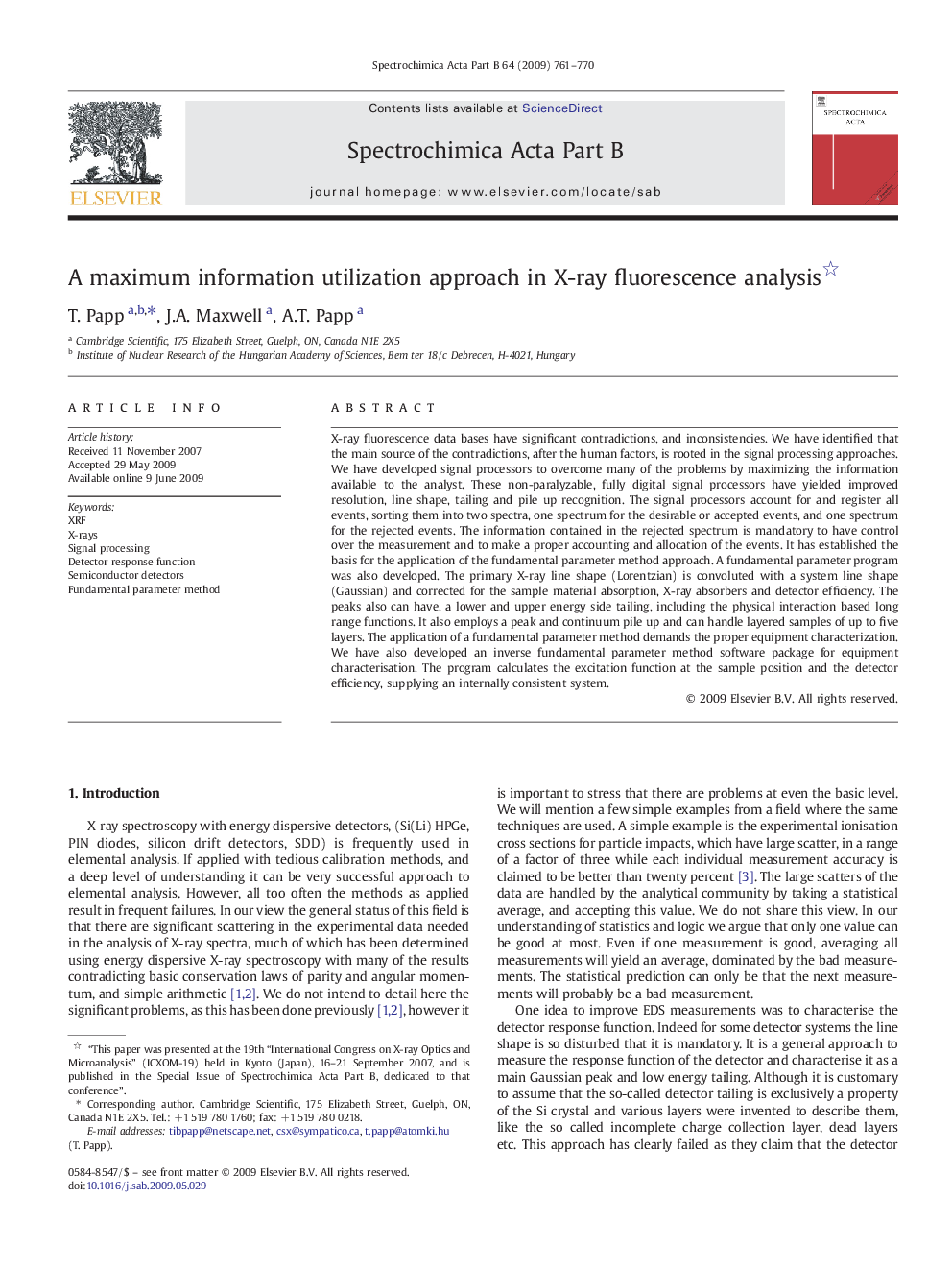| Article ID | Journal | Published Year | Pages | File Type |
|---|---|---|---|---|
| 1240877 | Spectrochimica Acta Part B: Atomic Spectroscopy | 2009 | 10 Pages |
X-ray fluorescence data bases have significant contradictions, and inconsistencies. We have identified that the main source of the contradictions, after the human factors, is rooted in the signal processing approaches. We have developed signal processors to overcome many of the problems by maximizing the information available to the analyst. These non-paralyzable, fully digital signal processors have yielded improved resolution, line shape, tailing and pile up recognition. The signal processors account for and register all events, sorting them into two spectra, one spectrum for the desirable or accepted events, and one spectrum for the rejected events. The information contained in the rejected spectrum is mandatory to have control over the measurement and to make a proper accounting and allocation of the events. It has established the basis for the application of the fundamental parameter method approach. A fundamental parameter program was also developed. The primary X-ray line shape (Lorentzian) is convoluted with a system line shape (Gaussian) and corrected for the sample material absorption, X-ray absorbers and detector efficiency. The peaks also can have, a lower and upper energy side tailing, including the physical interaction based long range functions. It also employs a peak and continuum pile up and can handle layered samples of up to five layers. The application of a fundamental parameter method demands the proper equipment characterization. We have also developed an inverse fundamental parameter method software package for equipment characterisation. The program calculates the excitation function at the sample position and the detector efficiency, supplying an internally consistent system.
